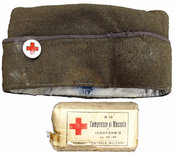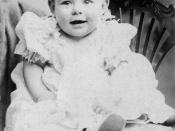Tong � PAGE \* MERGEFORMAT �2�
Nicholas Tong
Ms. Bonnette
AP English
23 September 2014
Stars of War
For many centuries, objects were given to military personal, such as knights, soldiers, or even samurai in order to distinguish their skill, dedication, or bravery. These objects usually give their owner respect and honor from his peers. Throughout different time periods and regions, these objects, despite having a similar meaning, have different appearances. Knights in the medieval ages, for their bravery, were awarded with crests and an occasional trinket in order to show their rank and status. Samurai were awarded with swords that depicted their rank and lord. The soldiers were given objects that directly showed a soldier's rank and status, as well as state the honorable achievements of the soldier. In World War 1, soldiers were given stars, ribbons, medals, and ranks. These objects represented their rank and skill. Throughout Ernest Hemingway's novel Farewell to Arms, officer stars are used to depict the skill of soldiers.
The stars also represent one's identity and responsibilities. To Hemmingway, the stars also hold the value and suffering of war, in which many try to throw away.
The officer stars are first shown importance in chapter 15, where Henry only allows the Major with the high ranking stars to operate him. He believes the Major has more skill than the other surgeon due to the fact that the Major has high ranking stars. He states that if "a surgeon [is] any good he [will] be made a major" (Hemingway 98). The person he finally let operate on him is the a surgeon of Ospedale Maggiore, who he feels comfortable with, since this surgeon has a star in a box on his sleeve, which represents having enough skill, talent, and experience of operations. He does...


